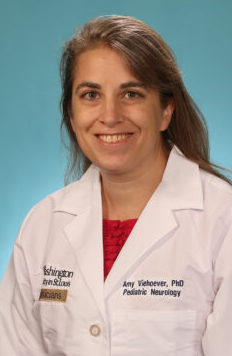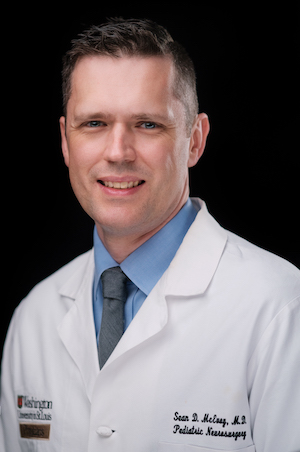For a child diagnosed with a movement disorder, performing brain surgery to alleviate their pain may seem too scary of an option for parents. Pediatric neurologists and neurosurgeons at the Washington University School of Medicine in St. Louis hope to alleviate that fear by discussing the potential benefits and realities of Deep Brain Stimulation (DBS).
In pediatric patients, movement disorders typically refer to diseases where a child has problems controlling the tone and movement of their arms and legs. One such disorder, Dystonia, is extremely painful and can lead to a condition called Status dystonicus, in which a child’s movement is so uncontrolled that it affects their blood pressure and ability to breathe.

Amy R. Viehoever, MD, PhD, assistant professor of neurology, has focused her research on treating pediatric movement disorders, with a special concentration on improving the use of DBS. She also runs the GNAO1 Neurodevelopmental Disorder Natural History Study, a clinical trial that seeks to understand the genetic causes of neurodevelopmental disorders like Dystonia.
Since 2011, Viehover has collaborated with WashU pediatric neurosurgeons in evaluating whether patients with Dystonia qualify for DBS surgery. “There are definitely several things that will suggest whether a child will be a good candidate for this surgery,” said Dr. Viehoever. “But each case is different.”
“The surgery can help treat the disease by reducing the rigid, locked muscles or taking the pain away,” said Sean McEvoy, MD, assistant professor of neurosurgery and pediatrics. “It doesn’t necessarily treat the fundamental cause of the disease, but it helps to decrease the discomfort and suffering.”

DBS is performed in two parts and requires a great deal of advanced planning given the level of accuracy that is required. First, an MRI scan is taken of the child’s brain and doctors map out where all the blood vessels are located to find the exact spot to place the electrodes. Next, two electrodes resembling thin wires are placed inside of the globus pallidus internus (GPi) part of the brain. During the second surgery, a battery powered generator is implanted into the child’s chest. An electrical current from the generator is sent to the electrodes, stimulating particular areas of the brain.
Viehoever oversees the next phase, which is programing the generator. She works with the patient for several months, adjusting the intensity and shape of the electrical current that comes out of the electrode, to find the optimal way of stimulating the brain and getting the best response. At every patient visit, Viehoever performs a very specific set of formalized measurements to show how the patient was functioning before and after the surgery.
While DBS surgery can be effective for reducing the intensity of symptoms for patients, particularly in children who are born with genetic disorders that lead to a movement disorder, it may take months after the surgery before the patient begins feeling relief. Additionally, not every child with Dystonia is the best candidate for DBS.
“We constantly walk a fine line between trying to give care to children who can benefit from the surgery, while also determining who may not,” said McEvoy. “It’s hard because everyone wants to be hopeful and approach this surgery with the belief that we’re going to make them better, but we always try to be mindful of not overselling what we can do.” Because of the success of DBS for movement disorders, similar surgeries are now being performed at St. Louis Children’s Hospital for children with epilepsy that have not responded to multiple medications.
For more information about treating movement disorders in children and adults, go to movementdisorders.wustl.edu or call 314-362-6908 to schedule an appointment.